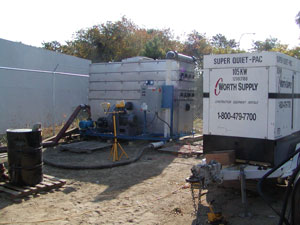 If you’re using your environmental database management system (EDMS) primarily as a high-capacity file cabinet, you’re missing out on the most valuable aspects of this versatile technology, especially when it comes to site contamination analysis. Your EDMS can support and augment both functional and analytical processes.
If you’re using your environmental database management system (EDMS) primarily as a high-capacity file cabinet, you’re missing out on the most valuable aspects of this versatile technology, especially when it comes to site contamination analysis. Your EDMS can support and augment both functional and analytical processes.
Put it to use in all the obvious ways.
Automatic data capture and upload or retrieval eliminates time-wasters like manual data entry, transcription, filing, searching for specific documents, interrupting someone else to get information and waiting around while they transport records to you. And it virtually eliminates human error along the way. You can get down to work, faster and more accurately.
Freeing geologists, hydrologists, engineers and lab associates from non-skilled tasks means they can concentrate on the investigation itself, especially the analytical aspects.
Because your EDMS does allow storage of massive data volumes, you can gather more field data, more quickly, and instantly transmit it to your central database. You can immediately retrieve relevant historical data and previously-produced analyses to build on past work, facilitating current project progress and devising better solutions.
The central database provides 24/7 access to everyone on your project team, including the non-scientists. Each person can pull the information they need, when they need it, in whatever customized format works best for them. You can immediately share information of all types with the entire analytical team or get specialized input if necessary from another “outside” colleague.
Used properly, your EDMS creates a true collaborative environment, where you can work simultaneously with others to discuss and evaluate site contamination factors without having to travel to meetings.
And that’s where your electronic database management system really starts to shine.
It can provide broad-based interpretive support, too, allowing you to do your best possible scientific work. EDMS-assisted analysis lets you:
- Capture site photos or access photos, maps, etc. while in the field without carting around bulky reference materials.
- Draw 2D, 3D, GIS, contour maps and other surface and subsurface visualizations that clearly show the exact nature and extent of existing contamination including whether there’s been migration to or from adjacent property. That allows the most thorough analysis and helps you develop the most effective clean-up options.
- Investigate alternative remediation scenarios and identify best choices, by posing queries and getting immediate answers no matter how complex the question.
- Perform calculations, estimates, etc. for more accurate cost determination and cost-benefit analysis.
- Automatically convert inconsistent formats and metrics for easy comparison. Your EDMS will even detect and alert you to variances or other anomalies in your data.
- Ensure final reports and submittals and any necessary compliance filings are complete. And completely accurate. You can identify who collected data, where and when. Your EDMS automatically quality-checks the information as it’s uploaded and can add GIS references, too, all of which assures a thorough audit trail.
- Make the most of each person’s skills and expertise, with greater productivity and scientific creativity.
An electronic database management system can make your entire operation more efficient so you can be more effective. It helps streamline processes and boost everyone’s ability to focus on their most important tasks. Site contamination analysis differs with every job, and every solution you develop has to fit that unique situation.
When you take full advantage of your EDMS as it’s intended to function, your work will be systematically organized right from the start, regardless of project size or scope or how many projects you’re managing simultaneously. Faster, more accurate results mean clean-up can happen soonest, the ultimate goal for those directly involved as well as the community at large.
And that’s the bottom line of success.
